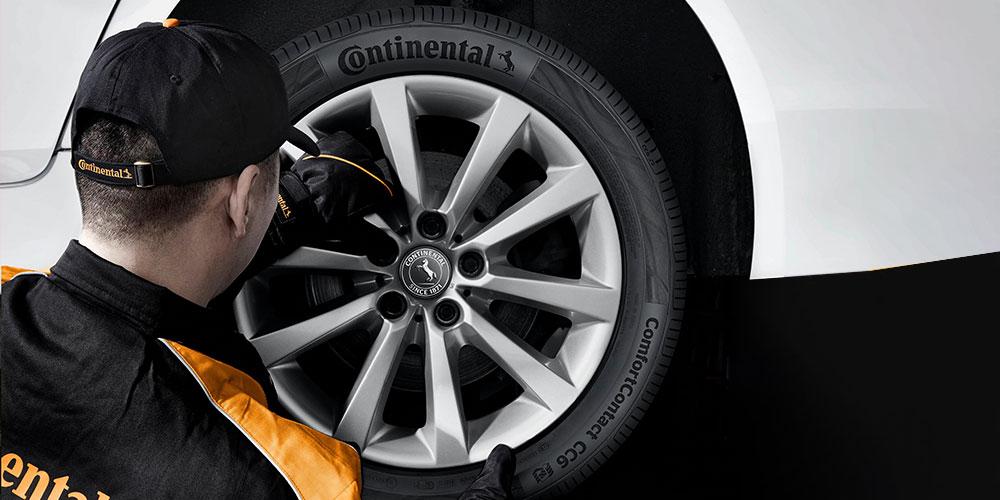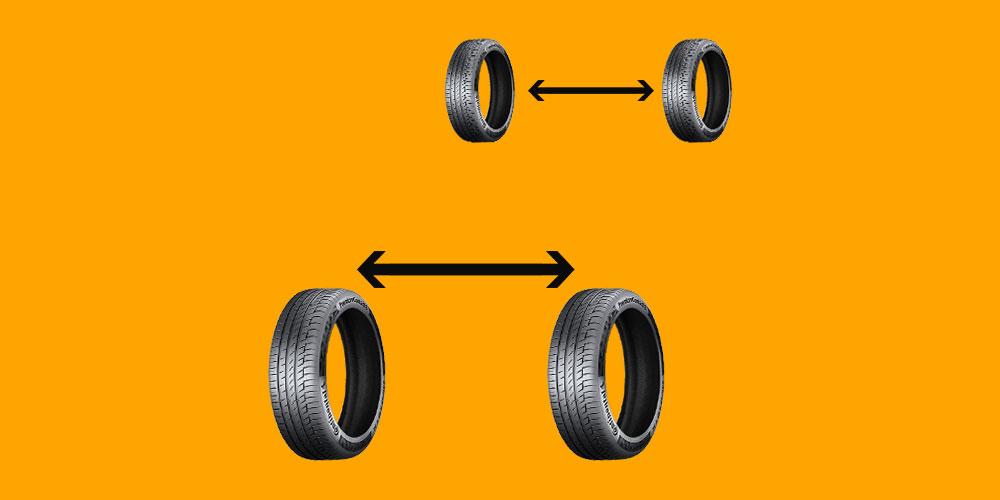
Tyre rotation is a periodic maintenance process involving the repositioning your car’s tyres in specific patterns from front to back or side to side to ensure longevity and safety.
Tyre wear is also dependent on the drive type and each one of these types require different rotation treatments to guarantee minimum wear and maximum balance.
Because of road friction and force, the tyres on the rear will experience a different degree of wear and tear in comparison to ones on the front.
Putting a blind eye to tyre rotation will result in dire consequences that lead to uneven wear and deep tread damage that makes it chopped or lumpy.
Further consequences of not rotating your tyres are decreased vehicle performance, excessive pull towards one side, weight disturbance, tread cupping, reduced traction, vibration and noisy tedious driving. To avoid the point where you have to refer to total tyre replacement, you should start looking into this at the earliest.
Typically, tire rotation should be done every 10,000 to 12,000 kilometers, though there are exceptions.
When Rotating Tyres, the Following Points Should Be Kept in Mind
- Thoroughly examine each tyre for possible sidewall or tread damage. The legal treadwear limit is 1.6 mm after which the tyre needs to be replaced.
- Check the tyre’s age for a comprehensive health check. Tyres are prone to becoming unsafe as they age. Refer to the last four digits of the DOT code to find out its age.

- To ensure proper mounting of the tyre, use a torque wrench to tighten the lug nuts.
- Adjust the air pressure according to specified standards provided by the vehicle manufacturer.
Tyre Rotation Patterns You Can Opt For
For determining optimal rotation pattern, consider the vehicle’s drive type i.e. front wheel drive, rear wheel, or all-wheel drive. Also, you need to know about tire and wheel sizes along with their directional capabilities.

- For Four Wheel, Rear Wheel & All Wheel Drive
Before rotating, ensure that all of your tyres are the same size and non-directional. For such settings, rearward cross and the X pattern rotations are appropriate.
The rearward cross pattern involves moving the rear wheels to the front and moving the front ones at the back on their corresponding opposite sides.
In the X pattern setting, both pairs of tires switch sides where the front right is replaced with rear left and vice versa.
- Rotation Patterns for Front Wheel Drive
For this setting, the forward cross and X rotation pattern serve best where you bring front wheels to the rear and the rear wheels to the front with switched sides. This pattern partially resembles the X pattern expect for the rear tyres setting i.e. swapping the right front with the left rear and vice versa.

- Rotation Patterns for Staggered Wheel Sizes
With some cars tyre rotations are impossible due to wheels being staggered and tires directional.
If your car has non-directional tires mounted with staggered wheel fitment, referring to side to side rotation pattern is the best option. Such an arrangement involves substituting left wheels for the right and vice versa.
Rotation May Effect the Tyre Pressure Monitoring System
While rotating the tyres is a good option to ensure longevity, it may have adverse effect on the Tyre Pressure Monitoring System (TPMS) therefore a qualified mechanic should be consulted for recalibration. Another important point to consider when rotating tyres is the “rolling direction” which should NEVER be reversed.
What to Do When Tire Rotation Isn't Possible?
Some vehicles have wheels and tires larger than what’s mounted to the front. This tyre setup is called staggered fitment, commonly found on high end sports and luxury cars.
If you come across such a case where the vehicle has directional tyres, there’s no chance for swapping without reversing the direction. The only option to rotate these tyres is side to side and only after dismounting and remounting them to the wheels. However, instead of going for this gruesome process and bearing loss in terms of wrong fitting, you should consider buying a new pair of tyres. Continental being one of best tyre brands ensuring fuel efficiency and longevity offers a wide range of options to cater tyre replacement needs.
Tyre Rotation in a Nutshell
Periodic rotation can go a long way in terms of ensuring proper weight distribution and avoiding uneven wear. It is a relatively inexpensive process that augments handling and performance every time you take your ride out on trips.







